Most of us have heard about Egypt as the Land of the Pharaohs and the place where the great pyramids are. I grew up watching the movie Moses, and since then, I got intrigued by Egyptian history and culture. At some point, this is one of the reasons why I am fascinated with anything of great historical value.
Yesterday, I've shared the story of Hatshepsut, the first female Pharaoh of Egypt. I was really curious of her story that I spent the whole evening watching her documentaries on YouTube. I even downloaded some (sshhhh). I know she is just a fraction of Egypt's vast and diverse history, but I felt it was worth sharing.
Today, I will be sharing about the complex and sophisticated pyramids of Egypt. Let's go?
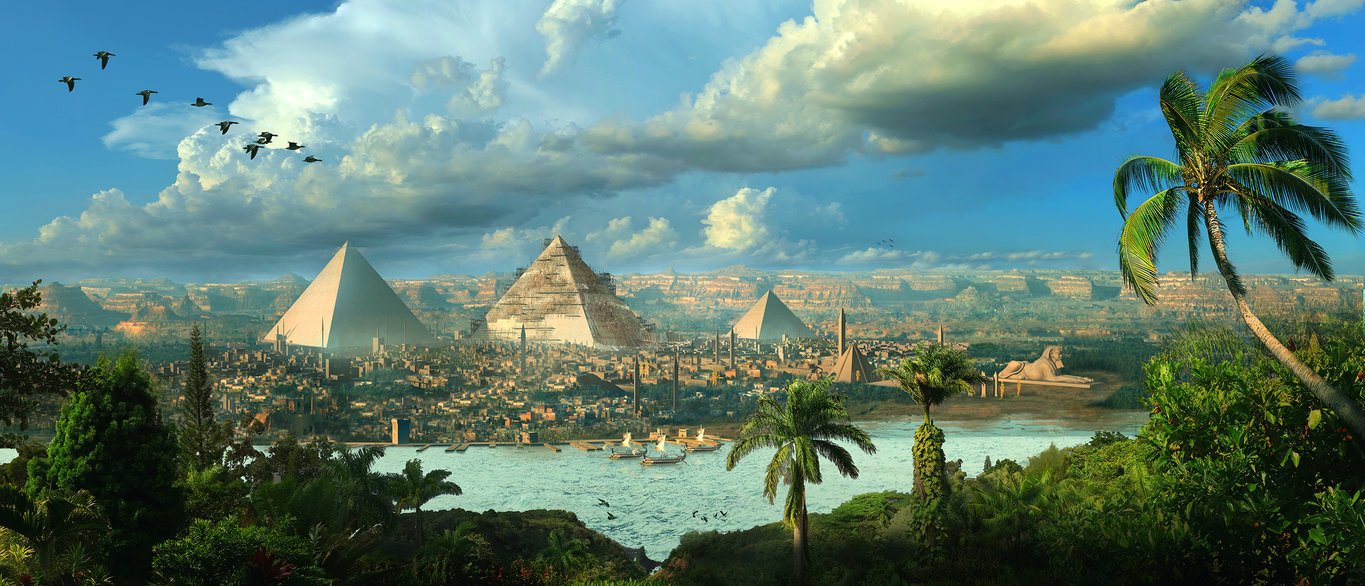
Ancient civilizations can be fascinating. Everything from what ancient people ate to how they built their homes and tended their animals fascinates people, especially when there are tangible remains of ancient, complex civilizations. That is especially true of ancient Egypt of the pharaohs, with pyramids such as those in Giza, Saqqara, and Dashur as some of the most famous relics of a time long gone.
Scattered along the Nile River where the ancient civilization of the pharaohs once was, the pyramids are some of the most recognizable symbols of ancient Egypt. The pyramids were monuments to the pharaohs, symbolizing their power and greatness even in death. However, pyramids were built only over a relatively short period of time in the country’s history and mainly in the area near what is now the city of Cairo. Although badly damaged as time goes by, they still remain some of the most unique and impressive ancient monuments in Egypt.
Visitors find the pyramids intriguing and perplexing. The triangle-like structures are built of huge blocks of stone likely cut from quarries some distance away, covered with a hard outer layer which helped protect the softer stone underneath.
The inner chambers are now empty but likely once held not only the pharaohs’ bodies, but also jewels, statues, and other valuable objects hidden beneath the massive stone structures.

Pyramid-building developed over time. Experts believe that one of the earliest examples still in existence is the Step Pyramid in Saqqara, commissioned by the Pharaoh Djoser of Egypt’s Old Kingdom in about 2600 B.C, just outside the current city of Cairo. The six levels of the pyramid decrease in size closer to the top, giving the impression of a series of steps, as the name suggests. Although the years have worn the pyramid down considerably, it still remains an impressive sight.
Two of the most interesting pyramids are in Dashur, about a half-hour drive south of Cairo. According to researchers, the Red and Bent Pyramids, built for the pharaoh Snefru, date from a time soon after the Step Pyramid was built and are precursors of the more famous Giza structures.
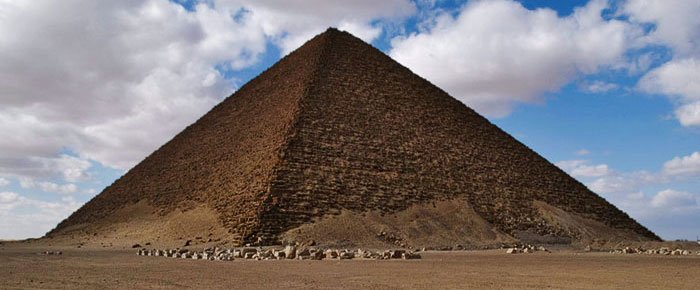
The Red Pyramid is known not only for the colored stone that gives the structure its name but also for being the first of the true pyramids in Egypt, built with straight sides. Its massive size and impressive construction stand out in the flat desert surrounding the pyramid complex.
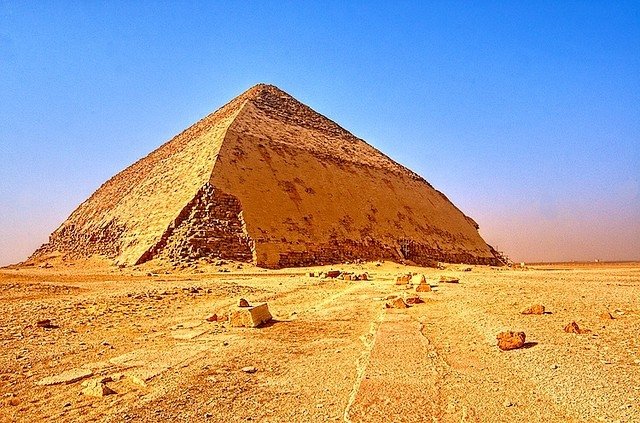
The Bent Pyramid, only a short walk from the Red Pyramid, is one of the most unique of its kind. The giant structure bends like a rhombus halfway up, changing from a 54-degree angle to 43 degrees. Whether the alteration was the result of a mistake in calculations or part of a new design is still a mystery.
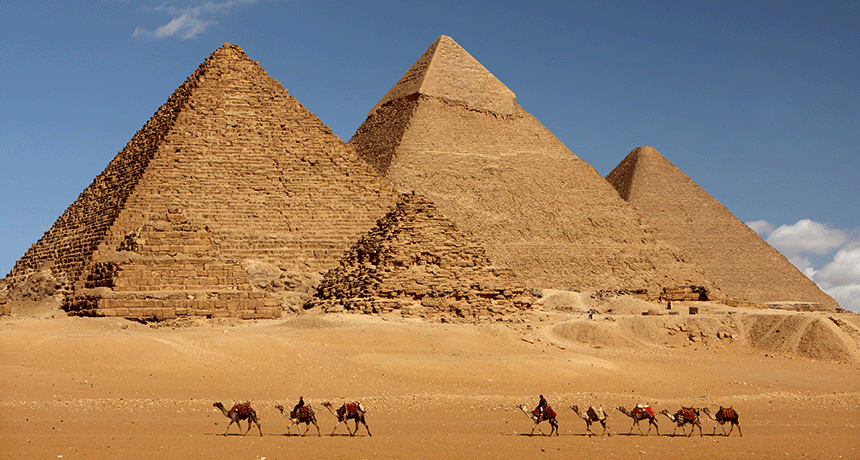
Even more famous than the structures in Saqqara and Dashur are the pyramids of Giza. The largest is the Great Pyramid, built by Khufu, the son of Snefru. The Great Pyramid is the largest of these structures still standing, and its sheer size is astounding. Two somewhat smaller pyramids stand nearby, built by Khafre and Menkaura, as well as several smaller structures for Khufu’s wives.
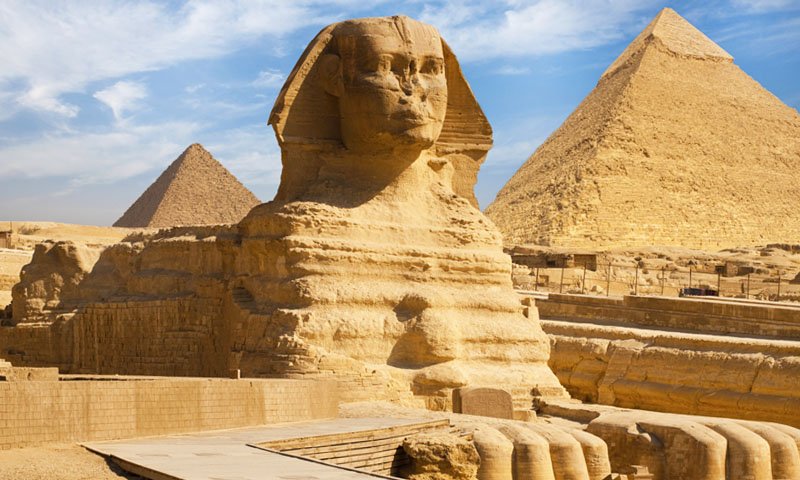
The Sphinx, a huge statue with a man’s head and a lion’s paws, is also part of the funerary complex. Although badly decayed, the Sphinx is still a remarkable sight.
For a glimpse into the world of ancient Egypt, the pyramids of Giza, Saqqara, and Dashur are ideal monuments to visit.
Resources: 1
Image Credits: 1 2 3 4 5 6
